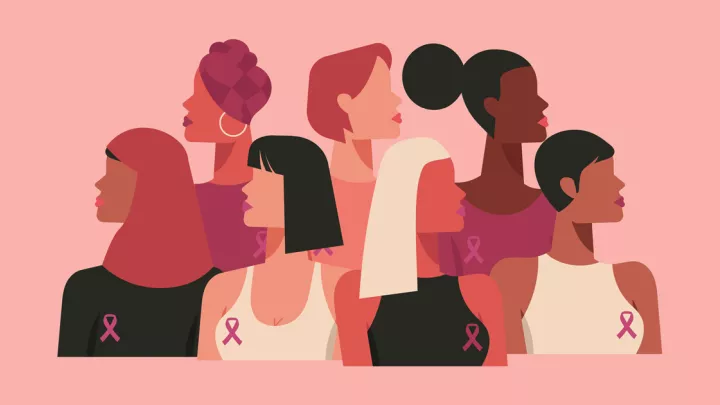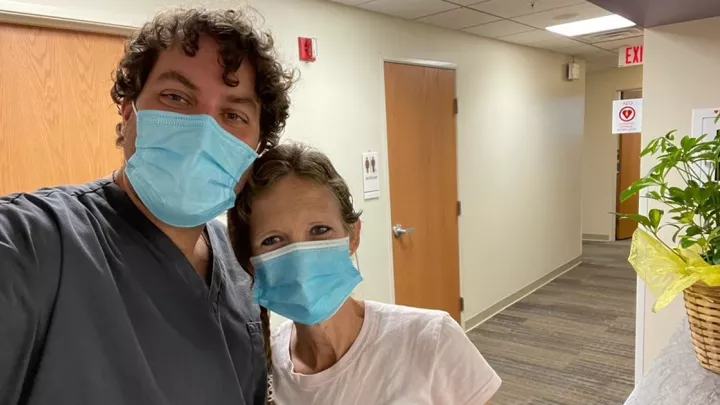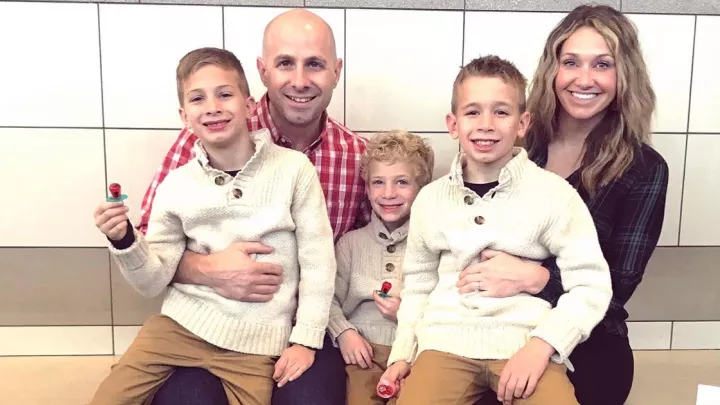Mastectomies and nipples: What are the options for breast reconstruction?

Sensation or feeling in your breasts is important for sexual arousal, partner intimacy and psychological well-being.
"The simple fact of not feeling a part of one's body, especially breasts, can be mentally inflicting," says breast cancer surgeon Juan Santamaria, MD.
Most breast reconstruction options restore breast appearance, but not sensation. Dr. Santamaria says for most mastectomy patients, their breasts will feel numb after reconstruction. "Even though the reconstruction can look great cosmetically, with a good shape, contour and nipple, they won't feel sensation in their new breast."
That's where nipple nerve reconstruction comes in.
"In this new procedure, we reconstruct the nerve that supplies sensation to the nipple and the skin around it," says Dr. Santamaria. In the same surgery, Dr. Santamaria preserves part of the nerve, while plastic surgeon Sean Figy, MD, reconstructs the nerve pathway.
"With breast reconstruction, we get to help people heal not only physically, but also emotionally, from the trauma of breast cancer," says Dr. Figy.
Nerve reconstruction keeps sensation in the nipple
Keeping the nipple itself after a mastectomy – called nipple-skin sparing – isn't groundbreaking. But restoring a patient's feeling in their nipple and breast is. "We've been doing nipple-sparing mastectomies for many, many years," says Dr. Santamaria. "What's new is trying to restore the nipple and breast skin sensations, by reconstructing the nerve."
The technical name for this procedure is immediate nipple nerve reconstruction during nipple-skin sparing mastectomy. The goal is to restore nipple and breast skin sensation. Nebraska Medicine is the first and only to offer this service in Nebraska.
"I'm constantly looking to improve as a plastic surgeon," says Dr. Figy. "I'm thrilled to continue pushing reconstruction to provide the best possible quality of life for people with breast cancer."
What happens to the nipple in a mastectomy?
In a total mastectomy, the nipple and areola (the darker area around the nipple) are removed. The last steps in a complete breast reconstruction are to make a new nipple and areola.
A nipple skin-sparing mastectomy, however, does save the nipple. Nipple-sparing mastectomies are safe procedures. "For several years, studies have shown that sparing the nipple is oncologically safe," says Dr. Santamaria.
Who is a candidate for nipple nerve reconstruction?
Ideal candidates for nipple nerve reconstruction:
- Don't have cancer directly in or around the nipple
- Have a smaller cup size (A, B or C)
- Have minimal drooping (ptosis) in their breasts
The location of the tumor matters, if the patient has breast cancer. "If the patient has cancer closer to or involving the nipple, they wouldn't qualify for a nipple-skin sparing mastectomy," explains Dr. Santamaria.
With breasts where the nipple lays lower (medically speaking, greater ptosis), the nipple is more likely to get infected or die after the surgery. The procedure is not recommended for these individuals or those with larger breasts. "The nerve grafts commercially available aren't long enough for larger cup sizes," explains Dr. Figy.
However, people with larger breasts (D cup and above) or a lot of drooping (ptosis) can be candidates for nipple-skin sparing mastectomy. They first need to undergo breast reduction and lift to reduce breast volume and bring the nipple to a higher and safer position. Three to six months later, they can undergo nipple-skin sparing mastectomy, and some will then become candidates for nipple nerve reconstruction. "Larger breasted patients with more ptosis still have hope for nipple sparing and nerve reconstruction," says Dr. Santamaria.
Patients who smoke or who have unmanaged diabetes are not ideal candidates for nipple nerve reconstruction.
People who aren't good candidates for nerve reconstruction can choose from more traditional options. "If the nipple can't be saved, there's a couple of different options for making nipples," says Dr. Figy. "We can either reconstruct the nipple or you can do a 3D nipple tattoo."
Nipple reconstruction after breast reconstruction
Traditional nipple reconstruction is done about three months after your breast reconstruction. Your nipple is made using the skin on your newly reconstructed breast. Your skin is lifted and folded in a way that causes it to project outward, making it look like a natural nipple.
With traditional nipple reconstruction, the new nipple will be hard all the time.
A new areola (darker circle around the nipple) can be made in the following ways:
- Tattoo only
- Local flap with tattoo
- Local flap with skin graft
- Nipple sharing/graft from your other breast
Areola tattoos after nipple reconstruction
Areola tattooing is done after your nipple has healed, about one to two months after your nipple reconstruction.
"Nipple tattoos can look very realistic and cosmetically appealing, but you won't feel anything since there's no innervation," says Dr. Santamaria.
The tattoo artist will try to match the color and shape of your natural areola as closely as possible. The medical name for tattooing is micropigmentation.
Nipple tattoos are safe. "Getting a nipple tattoo will not cause cancer or hide cancer development," says Dr. Santamaria.
3D nipple tattoos after mastectomy
A 3D nipple tattoo makes it look like you have a nipple, as opposed to the plastic surgeon creating a nipple. "The 3D tattoo gives the appearance of dimension," Dr. Figy explains. "Even up close, it looks like there's a natural nipple distinct from the colored areola. However, there isn't."
This is a good option for people who don't want to wear a bra anymore since the nipple will be flat. With traditional nipple reconstruction, the nipple will be hard all the time.
"There's a wonderful 3D nipple tattoo artist here in Omaha," says Dr. Figy. "People have been very happy with their 3D tattoos."
Is breast reconstruction covered under insurance or Medicare?
Most insurance companies are required by federal law to cover breast reconstruction surgery. 3D tattoos, if performed by a tattoo artist and not a health care provider, aren't typically covered by insurance.
"All of these types of mastectomies and reconstruction are usually covered by Medicare," says Dr. Santamaria. You can always meet with our financial counseling services to get cost estimates for procedures.
Prophylactic mastectomy
Mastectomies aren't just for people with diagnosed breast cancer. Prophylactic or risk-reducing mastectomies help people with a high risk of lifetime breast cancer. If you have a genetic mutation or a strong family history of breast cancer, you can greatly reduce your lifetime risk of breast cancer with a risk-reducing mastectomy.
Options for nipples after a mastectomy
Your breast cancer surgeon and plastic surgeon can help you choose the right procedure for you.
- Nipple nerve reconstruction, or resensation, restores your feeling in the nipple and breast tissue. This procedure is best for people with smaller breasts, minimal drooping, and no cancer near or in the nipple
- Nipple reconstruction creates a cosmetically appealing nipple, but without sensation. This procedure is great for those who want a natural-looking nipple but aren't a candidate for nipple nerve reconstruction
- 3D nipple tattoos create the illusion of a nipple, but without sensation. This option is great for people who don't want to wear a bra
We're the first in the area to provide nipple nerve reconstruction, also called resensation. Call 402.559.5600 to make an appointment with our experienced breast cancer team.







